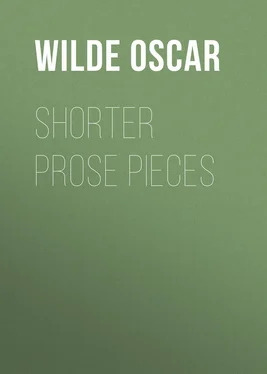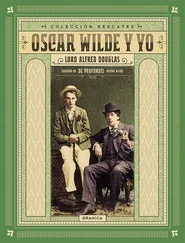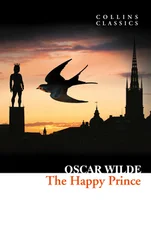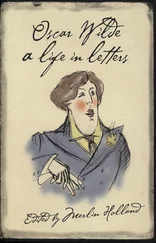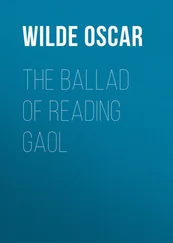Oscar Wilde - Shorter Prose Pieces
Здесь есть возможность читать онлайн «Oscar Wilde - Shorter Prose Pieces» — ознакомительный отрывок электронной книги совершенно бесплатно, а после прочтения отрывка купить полную версию. В некоторых случаях можно слушать аудио, скачать через торрент в формате fb2 и присутствует краткое содержание. Жанр: literature_19, foreign_prose, essays, на английском языке. Описание произведения, (предисловие) а так же отзывы посетителей доступны на портале библиотеки ЛибКат.
- Название:Shorter Prose Pieces
- Автор:
- Жанр:
- Год:неизвестен
- ISBN:нет данных
- Рейтинг книги:4 / 5. Голосов: 1
-
Избранное:Добавить в избранное
- Отзывы:
-
Ваша оценка:
- 80
- 1
- 2
- 3
- 4
- 5
Shorter Prose Pieces: краткое содержание, описание и аннотация
Предлагаем к чтению аннотацию, описание, краткое содержание или предисловие (зависит от того, что написал сам автор книги «Shorter Prose Pieces»). Если вы не нашли необходимую информацию о книге — напишите в комментариях, мы постараемся отыскать её.
Shorter Prose Pieces — читать онлайн ознакомительный отрывок
Ниже представлен текст книги, разбитый по страницам. Система сохранения места последней прочитанной страницы, позволяет с удобством читать онлайн бесплатно книгу «Shorter Prose Pieces», без необходимости каждый раз заново искать на чём Вы остановились. Поставьте закладку, и сможете в любой момент перейти на страницу, на которой закончили чтение.
Интервал:
Закладка:
Talking of Fashion, a critic in the Pall Mall Gazelle expresses his surprise that I should have allowed an illustration of a hat, covered with "the bodies of dead birds," to appear in the first number of the Woman's World; and as I have received many letters on the subject, it is only right that I should state my exact position in the matter. Fashion is such an essential part of the mundus muliebris of our day, that it seems to me absolutely necessary that its growth, development, and phases should be duly chronicled; and the historical and practical value of such a record depends entirely upon its perfect fidelity to fact. Besides, it is quite easy for the children of light to adapt almost any fashionable form of dress to the requirements of utility and the demands of good taste. The Sarah Bernhardt tea-gown, for instance, figured in the present issue, has many good points about it, and the gigantic dress-improver does not appear to me to be really essential to the mode; and though the Postillion costume of the fancy dress ball is absolutely detestable in its silliness and vulgarity, the so-called Late Georgian costume in the same plate is rather pleasing. I must, however, protest against the idea that to chronicle the development of Fashion implies any approval of the particular forms that Fashion may adopt.
WOMAN'S DRESS
The "Girl Graduate" must of course have precedence, not merely for her sex but for her sanity: her letter is extremely sensible. She makes two points: that high heels are a necessity for any lady who wishes to keep her dress clean from the Stygian mud of our streets, and that without a tight corset the ordinary number of petticoats and etceteras' cannot be properly or conveniently held up. Now, it is quite true that as long as the lower garments are suspended from the hips a corset is an absolute necessity; the mistake lies in not suspending all apparel from the shoulders. In the latter case a corset becomes useless, the body is left free and unconfined for respiration and motion, there is more health, and consequently more beauty. Indeed all the most ungainly and uncomfortable articles of dress that fashion has ever in her folly prescribed, not the tight corset merely, but the farthingale, the vertugadin, the hoop, the crinoline, and that modern monstrosity the so-called "dress improver" also, all of them have owed their origin to the same error, the error of not seeing that it is from the shoulders, and from the shoulders only, that all garments should be hung.
And as regards high heels, I quite admit that some additional height to the shoe or boot is necessary if long gowns are to be worn in the street; but what I object to is that the height should be given to the heel only, and not to the sole of the foot also. The modern high-heeled boot is, in fact, merely the clog of the time of Henry VI., with the front prop left out, and its inevitable effect is to throw the body forward, to shorten the steps, and consequently to produce that want of grace which always follows want of freedom.
Why should clogs be despised? Much art has been expended on clogs. They have been made of lovely woods, and delicately inlaid with ivory, and with mother-of-pearl. A clog might be a dream of beauty, and, if not too high or too heavy, most comfortable also. But if there be any who do not like clogs, let them try some adaptation of the trouser of the Turkish lady, which is loose round the limb and tight at the ankle.
The "Girl Graduate," with a pathos to which I am not insensible, entreats me not to apotheosize "that awful, befringed, beflounced, and bekilted divided skirt." Well, I will acknowledge that the fringes, the flounces, and the kilting do certainly defeat the whole object of the dress, which is that of ease and liberty; but I regard these things as mere wicked superfluities, tragic proofs that the divided skirt is ashamed of its own division. The principle of the dress is good, and, though it is not by any means perfection, it is a step towards it.
Here I leave the "Girl Graduate," with much regret, for Mr. Wentworth Huyshe. Mr. Huyshe makes the old criticism that Greek dress is unsuited to our climate, and, to me the somewhat new assertion, that the men's dress of a hundred years ago was preferable to that of the second part of the seventeenth century, which I consider to have been the exquisite period of English costume.
Now, as regards the first of these two statements, I will say, to begin with, that the warmth of apparel does not depend really on the number of garments worn, but on the material of which they are made. One of the chief faults of modern dress is that it is composed of far too many articles of clothing, most of which are of the wrong substance; but over a substratum of pure wool, such as is supplied by Dr. Jaeger under the modern German system, some modification of Greek costume is perfectly applicable to our climate, our country and our century. This important fact has already been pointed out by Mr. E. W. Godwin in his excellent, though too brief handbook on Dress, contributed to the Health Exhibition. I call it an important fact because it makes almost any form of lovely costume perfectly practicable in our cold climate. Mr. Godwin, it is true, points out that the English ladies of the thirteenth century abandoned after some time the flowing garments of the early Renaissance in favour of a tighter mode, such as Northern Europe seems to demand. This I quite admit, and its significance; but what I contend, and what I am sure Mr. Godwin would agree with me in, is that the principles, the laws of Greek dress may be perfectly realized, even in a moderately tight gown with sleeves: I mean the principle of suspending all apparel from the shoulders, and of relying for beauty of effect not on the stiff ready-made ornaments of the modern milliner – the bows where there should be no bows, and the flounces where there should be no flounces – but on the exquisite play of light and line that one gets from rich and rippling folds. I am not proposing any antiquarian revival of an ancient costume, but trying merely to point out the right laws of dress, laws which are dictated by art and not by archaeology, by science and not by fashion; and just as the best work of art in our days is that which combines classic grace with absolute reality, so from a continuation of the Greek principles of beauty with the German principles of health will come, I feel certain, the costume of the future.
Читать дальшеИнтервал:
Закладка:
Похожие книги на «Shorter Prose Pieces»
Представляем Вашему вниманию похожие книги на «Shorter Prose Pieces» списком для выбора. Мы отобрали схожую по названию и смыслу литературу в надежде предоставить читателям больше вариантов отыскать новые, интересные, ещё непрочитанные произведения.
Обсуждение, отзывы о книге «Shorter Prose Pieces» и просто собственные мнения читателей. Оставьте ваши комментарии, напишите, что Вы думаете о произведении, его смысле или главных героях. Укажите что конкретно понравилось, а что нет, и почему Вы так считаете.
